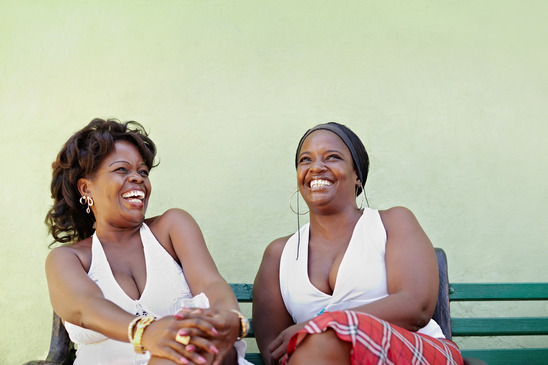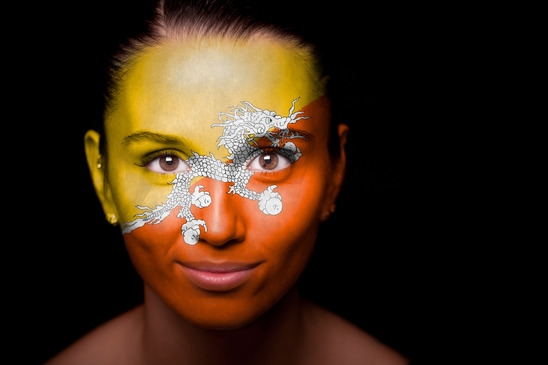People generally feel pretty good when they laugh, and we expect people are happy when they hear it. Even when you laugh as a distraction, or in reaction to something unpleasant, it helps put you in better spirits. Why is that?
It turns out it’s not just a human thing. Laughter is observed in many mammals, of all ages. It can be observed during play, tickling, and often around friends. Laughter is also a social thing. We are thirty times more likely to laugh when we’re with other people than when we are alone.
Before getting to the why, what exactly is laughter?
 Cognitive neuroscientist Sophie Scott describes laughter physically as “squeezing air out,” similar to breathing or even talking, but in a much more rapid and regular pattern. “You could be stamping on somebody, it’s the same effect.” Spasms strung together give a sort-of wheezing sound. They sound rather like animal calls, actually, when compared to talking.
Cognitive neuroscientist Sophie Scott describes laughter physically as “squeezing air out,” similar to breathing or even talking, but in a much more rapid and regular pattern. “You could be stamping on somebody, it’s the same effect.” Spasms strung together give a sort-of wheezing sound. They sound rather like animal calls, actually, when compared to talking.
Sophie then identifies 2 kinds of laughter: involuntary and ‘posed.’ Involuntary laughter, obviously, is not controlled; it lasts longer, and has a higher pitch. Posed laughter is something usually used as a social cue, and sounds a bit more nasally, although it is not completely fake. The brain has specific reactions to both kinds of laughter, so our brain recognizes both separately.
With involuntary laughter there’s more auditory processing happening in your brain. You’re hearing sounds you wouldn’t really in any other way. Posed laughter activates areas of the brain regarding “mentalizing,” or analyzing how other people may be thinking. Regardless of which kind, when you hear laughter, your brain automatically starts trying to figure out what was so funny. You want to be involved, to understand. And if you do, then you feel validated.
As a social cue, laughter allows us to show others that we are on the same page as them, that we agree, that we connect with them.
It’s especially obvious in children, who may ask outright “what’s so funny?” When we use posed laughter, it’s to communicate something to those around us. Involuntary laughter gets messages across as well, just unintentionally. They share positive feelings and connections.
There are even short and long term benefits derived from laughter, identified by the Mayo Clinic. When we laugh, we increase endorphins in our brains, which make us feel good and increases our blood flow. These help to soothe tension and allow us to relax more.
Laughter also decreases pain and lessens both anxiety and depression over time. And.. it helps you to connect with others, too.
Dr. Pillay can help explain the social connection with the “Law of Attraction,” or the real effects of empathy. When you watch someone else do something, similar neurons activate in your brain, as if you were doing the action as well. The same thing happens with emotions;
When we observe an emotion in someone, similar reaction neurons activate. This is why both anxiety and happiness are contagious.
As noted earlier, laughter is especially contagious. The more it spreads, the more joy the people involved feel, and the more connection they have with one another. That builds bonds.
This also helps explain why people in relationships who manage stress with laughter stay together longer. They also are physically less stressed and more joyful. The study involved romantic couples but the results likely hold true for any kind of relationship. People are more likely to stick around when they are happier.
Now, if someone seems to be missing their funny bone, don’t worry; humor can be learned. In fact, we study it well, as evidenced by the fact that older people recognize involuntary vs. posed laughter quicker than young people.
Humans tend to peak in recognition ability in their mid to late thirties and we pick up on more social cues as we age. We can even make laughter a habit until it becomes more genuine.
Forcing someone to be funny or laugh isn’t the goal though, but connection with those around us is. We are happier the more we laugh, and we feel closer to those around us as well. Even when times are hard, laughter can be a solution. Sophie described telling a joke to her mother while at a loved one’s funeral. The resultant laughter was definitely posed, but it created a distinct feeling. “We can laugh together; we’re gonna get through this.” It’s a type of support that was definitely appreciated.


